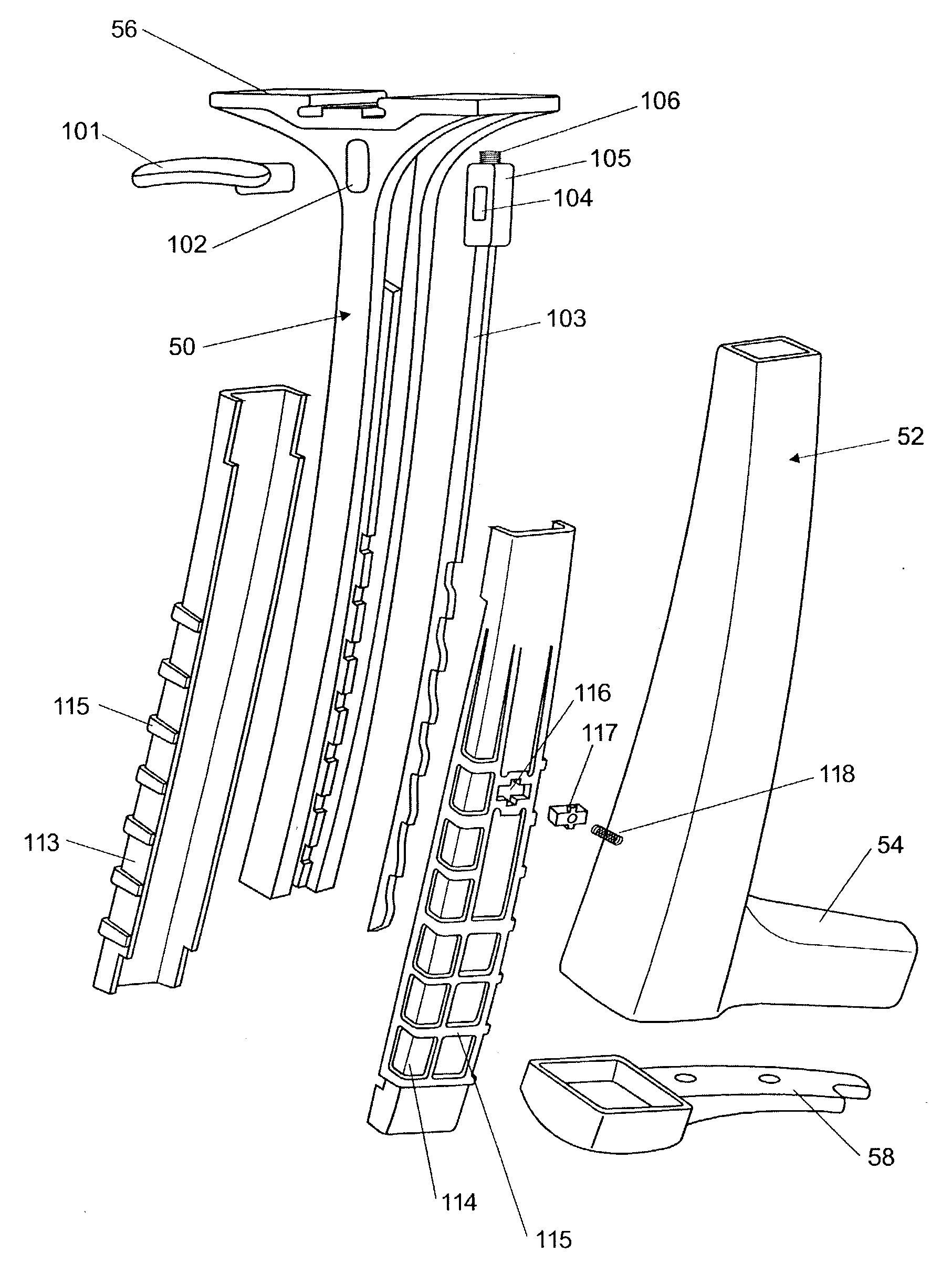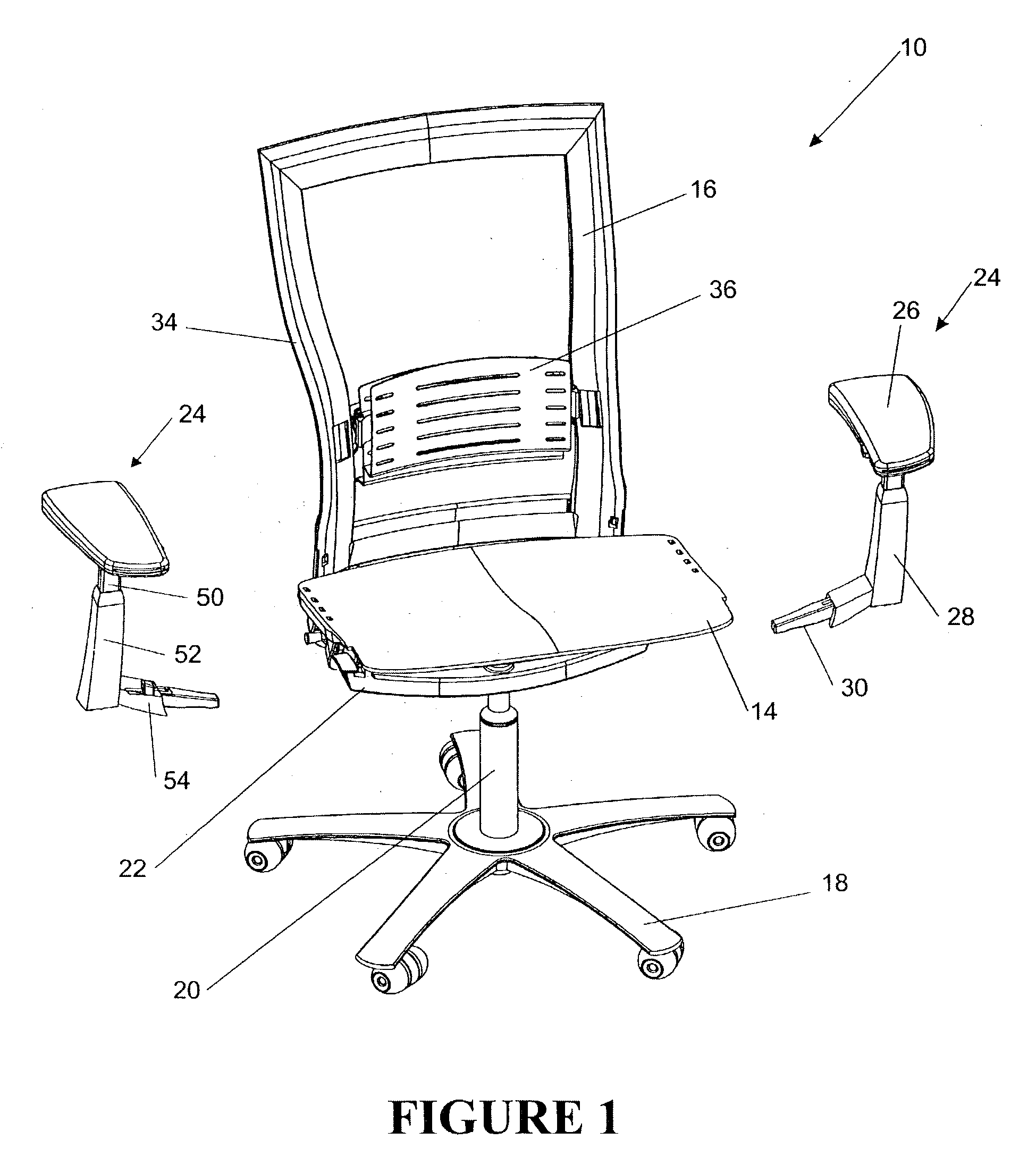Height adjustable arm assembly
a technology of adjustable arm and armrest, which is applied in the direction of stools, vehicle seats, seating furniture, etc., can solve the problems of not being able to meet the requirements of office chairs, not being able to adjust, and being difficult to repair,
- Summary
- Abstract
- Description
- Claims
- Application Information
AI Technical Summary
Benefits of technology
Problems solved by technology
Method used
Image
Examples
Embodiment Construction
[0040] FIG. 1 illustrates an office chair including a main assembly 10 having a seat portion 14 and a back portion 16. The seat portion 14 and the back portion 16 are supported above the ground by a support frame including a wheeled base 18 and a central support column 20. The support frame may also optionally include a mechanism enabling the back portion 16 to recline with a synchronous tilting action of the seat portion 14 as the back portion 16 reclines. The details of the mechanism are not important to the present invention and the reader may refer to our co-pending patent application U.S. Ser. No. 09 / 953,816, the details of which are incorporated by reference herein. The central support column 20 may house a pneumatic spring (not shown) for height adjustment of the seat portion 14 in conventional fashion. The pneumatic spring is connected to the main transom 22 of the chair, which extends transversely across the chair and is connected to the pneumatic spring by way of central s...
PUM
 Login to View More
Login to View More Abstract
Description
Claims
Application Information
 Login to View More
Login to View More - R&D
- Intellectual Property
- Life Sciences
- Materials
- Tech Scout
- Unparalleled Data Quality
- Higher Quality Content
- 60% Fewer Hallucinations
Browse by: Latest US Patents, China's latest patents, Technical Efficacy Thesaurus, Application Domain, Technology Topic, Popular Technical Reports.
© 2025 PatSnap. All rights reserved.Legal|Privacy policy|Modern Slavery Act Transparency Statement|Sitemap|About US| Contact US: help@patsnap.com



